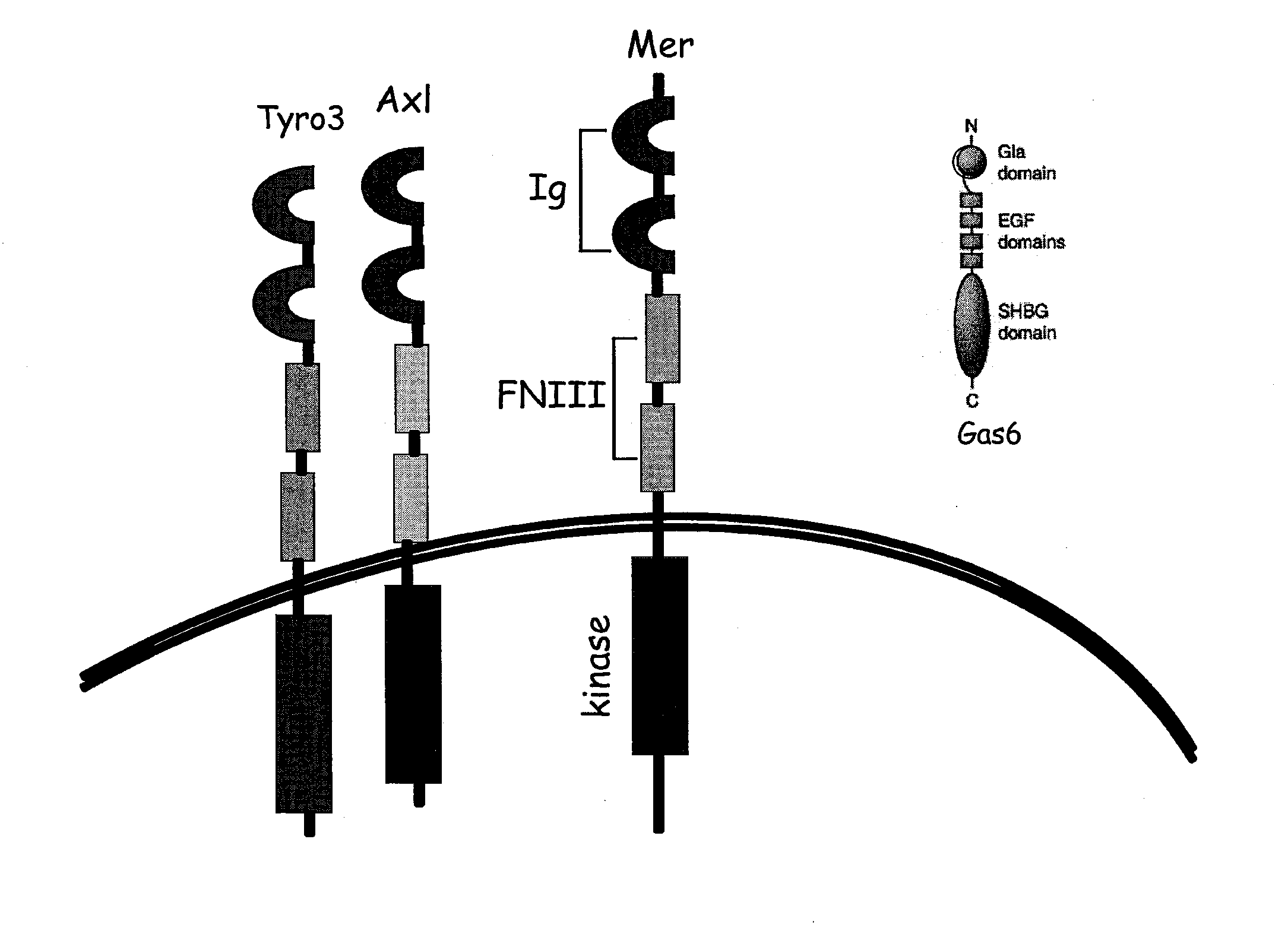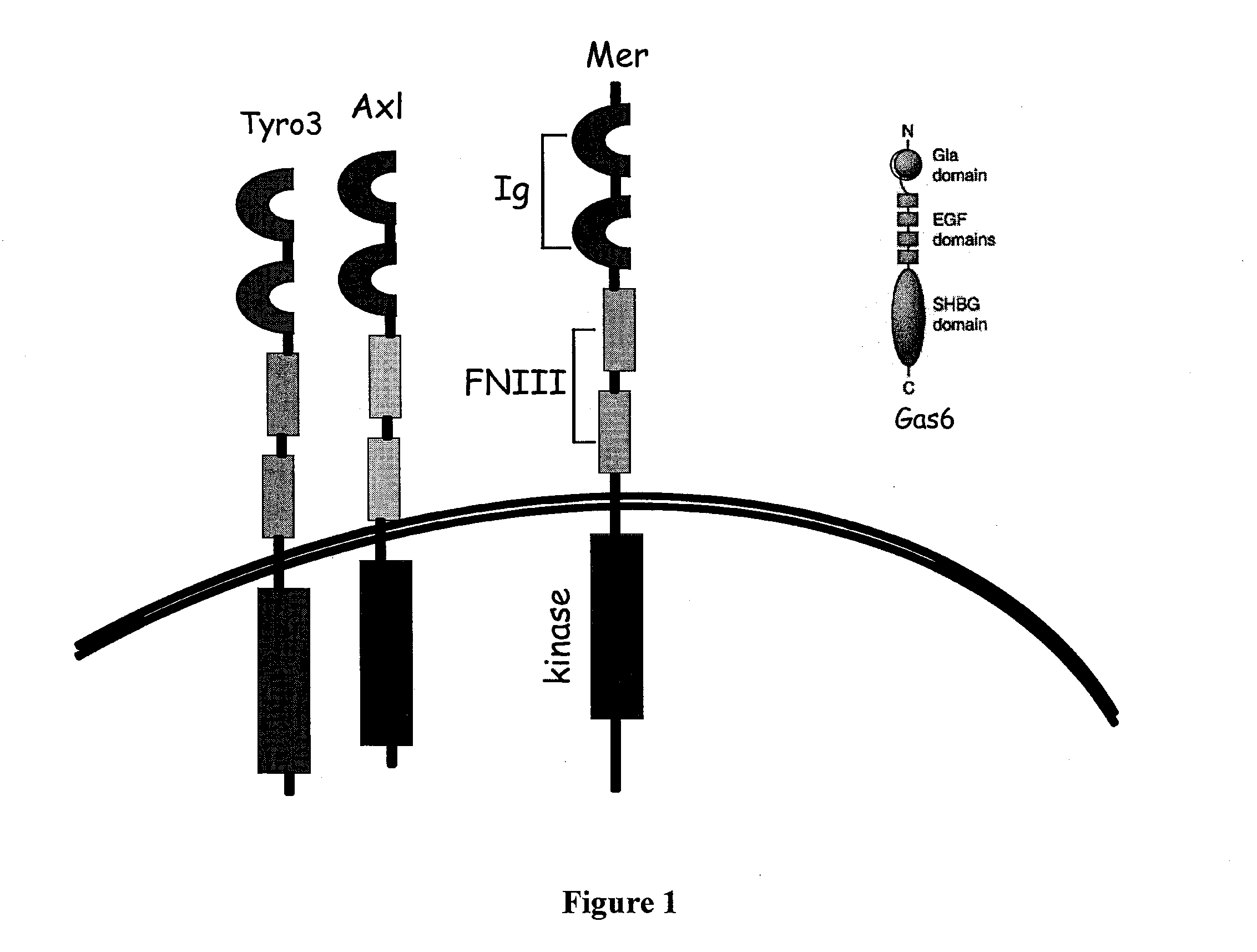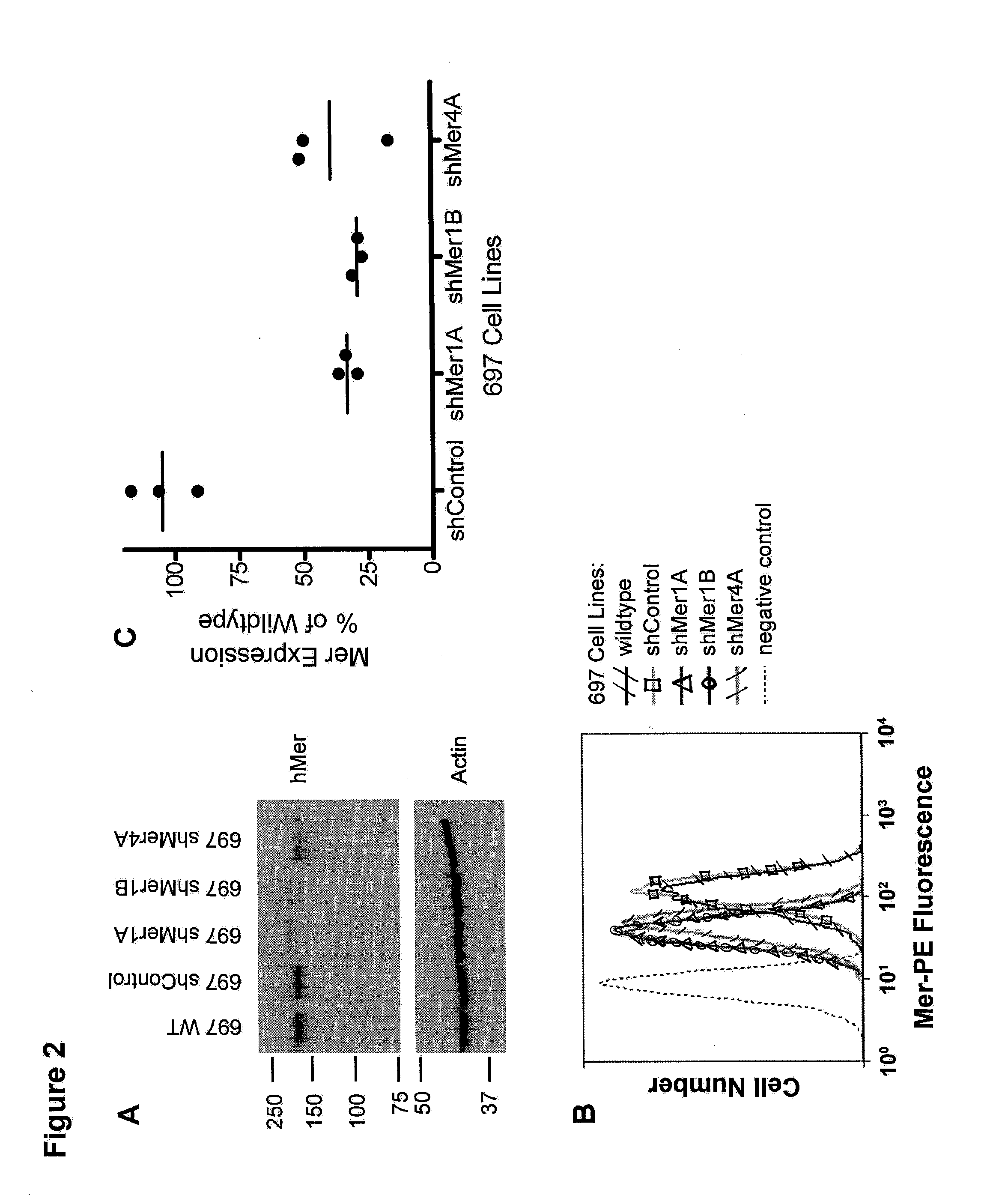Methods and compounds for enhancing Anti-cancer therapy
a technology of anti-cancer therapy and compounds, applied in the field of neoplastic disorders, can solve the problems of limited efficacy, prohibitive toxicities, poor standard treatment, etc., and achieve the effect of enhancing modifying the storage stability of the receptor tyrosine kinas
- Summary
- Abstract
- Description
- Claims
- Application Information
AI Technical Summary
Benefits of technology
Problems solved by technology
Method used
Image
Examples
example 1
[0126]Diagnostic bone marrow samples from patients with B-cell ALL were obtained from Children's Oncology Group and Denver Children's Hospital and analyzed by Western blot and flow cytometry for the expression of MerTK (hMer). Nineteen E2A-PBX1 B-ALL (EP+) and 14 non-E2A-PBX1 B-ALL (EP−) patient samples were processed. All 19 EP+ samples had MerTK protein expression by Western blot and / or flow cytometry. Conversely, 1 / 14 EP− samples was weakly positive for MerTK protein expression by flow cytometry and Western blot. Quantitative RT-PCR showed a 7-324 fold increase in MerTK transcript in EP+ samples in comparison to EP− samples (data not shown).
[0127]Short hairpin RNA (shRNA) was used to knockdown the expression of Mer and Axl in leukemia, lung adenocarcinoma and glioblastoma cell lines. Two Mer shRNA constructs (Mer 1 and Mer 4) have been tested for their ability to knockdown Mer expression in the human B-cell Acute Lymphoblastic Leukemia (ALL) cell line 697 which expresses the E2A-...
example 2
[0130]A glioblastoma stem cell population from three patients was examined for the presence of Mer receptor tyrosine kinase. As shown in FIG. 4, Western blot analysis of whole cell lysates from three separate patient samples demonstrate Mer expression in glioblastoma stem cell populations, as identified by the CD133 cell marker. Actin bands we used to verify that equal amounts of total cellular protein were loaded (data not shown).
example 3
[0131]Inhibition of Mer expression results in increased chemosensitivity in 697 cells. As shown in FIG. 5, wild type, shControl, and Mer knockdown (shMer1A, shMer1B) 697 cells were treated with the indicated concentrations of: A) 6-mercaptopurine (6-MP); B) methotrexate (MTX); C) vincristine (VCR); D) etoposide (VP-16); or E) doxorubicin (DOXO) for 48 hours and relative cell numbers were determined. IC50 values were determined by non-linear regression of data from at least three independent experiments performed in triplicate, as shown in Table 1.
TABLE 1IC50 values determined by non-linear regression of MTT assay data.697 Human B-ALL Cell LinesWild TypeshControlshMer1AshMer1B6-MPIC50>64>642.863.24(μM)(99% CI)NDND(2.2-3.7)(2.5-4.2)P ND—NDNDMTXIC50 27.5 27.812.3 11.8 (nM)(99% CI)(23.8-31.7)(24.4-31.6)(10.3-14.7)(10.6-13.1)P NS—**VCRIC50 1.04 1.020.540.46(nM)(99% CI)(0.84-1.29)(0.84-1.23)(0.46-0.63)(0.37-0.55)P NS—**VP-16IC5018117354.0 60.3 (nM)(99% CI)(124-264)(124-242)(43.5-66....
PUM
| Property | Measurement | Unit |
|---|---|---|
| body weight | aaaaa | aaaaa |
| body weight | aaaaa | aaaaa |
| body weight | aaaaa | aaaaa |
Abstract
Description
Claims
Application Information
 Login to View More
Login to View More - R&D
- Intellectual Property
- Life Sciences
- Materials
- Tech Scout
- Unparalleled Data Quality
- Higher Quality Content
- 60% Fewer Hallucinations
Browse by: Latest US Patents, China's latest patents, Technical Efficacy Thesaurus, Application Domain, Technology Topic, Popular Technical Reports.
© 2025 PatSnap. All rights reserved.Legal|Privacy policy|Modern Slavery Act Transparency Statement|Sitemap|About US| Contact US: help@patsnap.com



